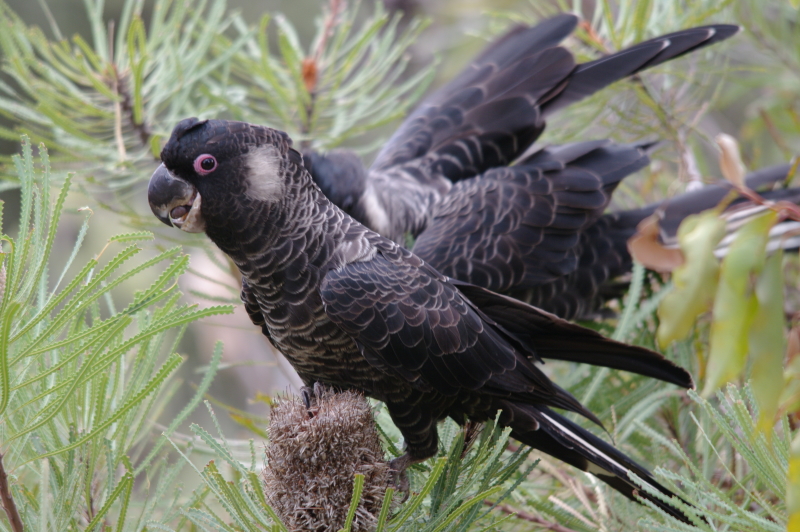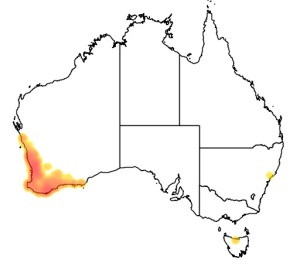Colours
Distinguishing features
It is mostly dark grey, with narrow light grey scalloping produced by narrow pale grey margins at the tips of dark feathers. It has a crest of short feathers on its head, with whitish patches of feathers that cover the ears. Its lateral tail feathers are white with black tips, and the central tail feathers all black. The irises are dark brown and the legs brown-grey.
Adult males have a dark grey beak and pink eye-rings. Adult females have a bone coloured beak, grey eye-rings and ear patches that are paler than those of the males. Juveniles have a bone coloured beak, grey eye-rings, and less white in the tail feathers. (Wikipedia)
Size
- From 55 cm to 62 cm (Length of specimen)
Wingspan
- Up to 120 cm and averaging 110 cm
Synonyms
Similar taxa
-
Animalia:
Long-billed Black Cockatoo (species: Calyptorhynchus baudinii)
The Short-billed Black Cockatoo beak is shorter and broader than that of the closely related Long-billed Black Cockatoo. (Wikipedia)
Distribution
Audio recordings
Flock of about 200 birds foraging on both sides of the road, some in trees, some on ground.
© Matthias Feuersenger
(source)
Diet
The cockatoo feeds primarily on seeds of proteaceous plants such as Banksia, Hakea and Grevillea, and secondarily on seeds from myrtaceous plants such as Eucalyptus and Corymbia. Over fifty native plant species are commonly used for food, either as seed or flowers, and this includes Western Sheoak, Orange Wattle, and Balga.
Invertebrates such as the larvae of wood-boring moths are also eaten. The cockatoos also feed on the seeds of Pinus species in the Gnangara pine plantations north of Perth.
Typically, birds sit in the crowns of trees cracking the seed pods or cones, but occasionally they forage for fallen seed on the ground. (Wikipedia)




